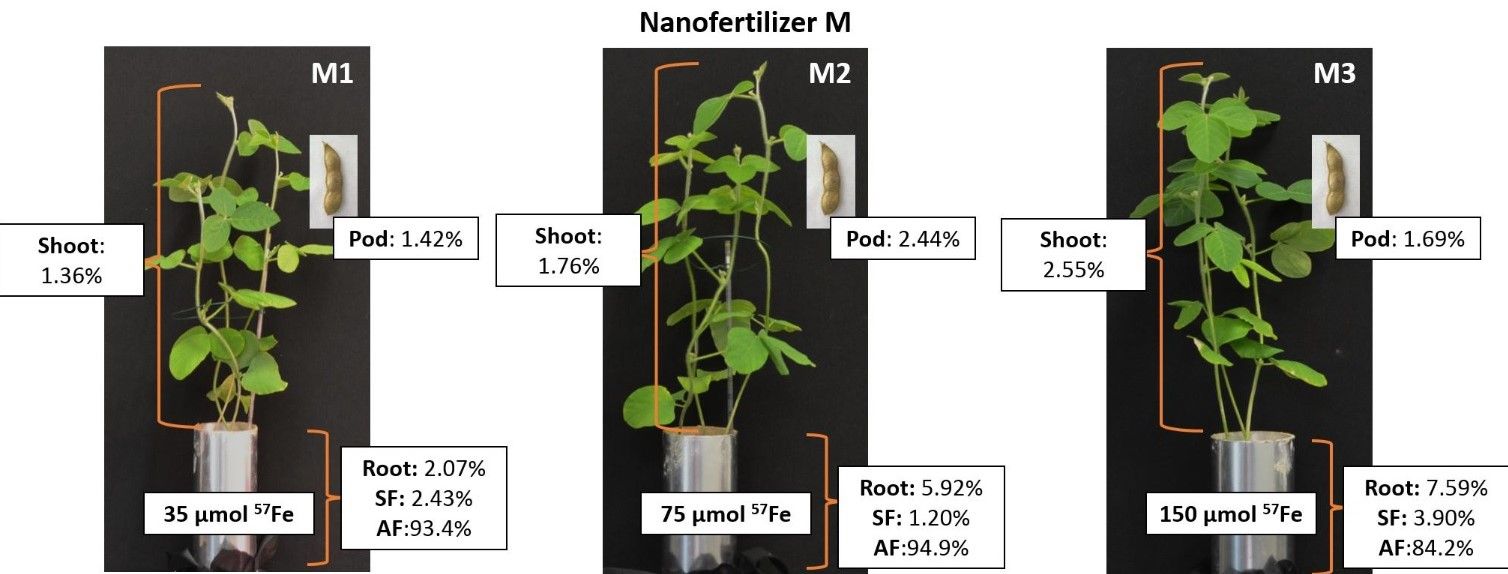The range of nanofertilizer products is constantly growing as agrichemical science further pushes the boundaries of our understanding of crop nutrition. Recently adding to the list, research has found that nanofertilizers are capable of boosting the effectiveness of iron humates in crops planted in iron deficient soils.
Most nanofertilizers are produced to replace traditional bulk fertilizer chemicals. They are therefore typically based on nanoscale particles of the key raw materials for fertilizer; potassium, nitrogen, and phosphates. However, there is also a need for fertilizers to cover other crop nutritional needs. Iron deficiency is a common problem, particularly in calcareous soils, such that iron humates are often applied in areas such as the Mediterranean basin, despite the fact that they are less effective than iron synthetic chelates.

By developing a nanofertilizer for combating iron deficiency, a team of researchers from Madrid and Moscow have created a product that can enhance iron humates. Not only will this allow for continued use of current fertilizer supply chains, but it will also remove the need to apply synthetic fertilizers, and so maintain a sustainable method of agriculture.
Key to the breakthrough was an understanding of how ‘particle size, pH content, and kinetics constrain iron humate efficiency.’
Previous studies had already made headway in the production of inorganic iron nanofertilizers. In 2012, a team from Madrid were able to synthesize nanosiderite (FeCO3) and demonstrated that it was highly effective in preventing iron chlorosis in chickpea plants. While in 2013, an Iranian-based study found that, “low concentrations of superparamagnetic Fe-NPs significantly increased the chlorophyll contents in sub-apical leaves of soybeans in a greenhouse test under hydroponic conditions.”
These and similar works noted the powerful affect of iron nanofertilizers (Fe-NFs), however little analysis had been conducted on natural Fe nano-humates.

The international research team was based at Madrid’s Universidad Autónoma, the Russian Academy of Sciences, the Lomonosov Moscow State University, the National Research Center in Moscow and the V.V. Dokuchaev Soil Science Institute.
Together they have now published their findings in the journal Frontiers in Plant Science, where they explain the heart of the experiments as follows; “Three hybrid nanomaterials (F, S, and M) were synthesized as iron-humic nanofertilizers (Fe-NFs) from leonardite potassium humate and Fe used in the form of Fe(NO3)3 or Fe2(SO4)3. They were characterized using Mössbauer spectroscopy, X-ray diffraction (XRD), extended X-ray absorption fine structure spectroscopy (EXAFS), transmission electron microscopy (TEM) and tested for iron availability in a calcareous soil pot experiment carried out under growth chamber conditions. Three doses (35, 75, and 150 μmol pot-1) of each iron-humic material were applied to soybean iron deficient plants and their iron nutrition contributions were compared to FeEDDHA and leonardite potassium humate as control treatments.”

The results were notably successful, as the researchers were able to state that, “The Fe-NFs used in this paper are capable of supplying Fe to the plants, transport it from root to shoot and reach the soybean pods. The slow and continuous iron release of these Fe-NFs confirms their long-term effect in providing iron in calcareous conditions while in the soil, and significantly they tend to remain available to the plant throughout the different growth stages.”
Although further research is needed, it is clear from this and previous studies that iron nanoparticles are a key part of successful plant nutrition. Fe-nanofertilizers can therefore offer a natural and sustainable addition to a farmer’s fertilizer options for calcareous soils. They are environmentally almost neutral and are crucially low cost.
As the report concludes, “Fe-NFs can be considered as a part of a novel technology in line with precision and sustainable agriculture.”
Photo credit: Managingnutrients, Thewaternetwork, & Frontiersin
